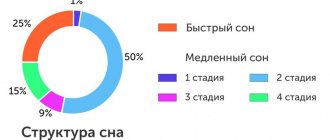Slowness is a decrease in the speed of thinking, cognitive and cognitive processes. Activity slowness and delay in decision making are also distinguished. In general, this category can be characterized as a decrease in reaction speed, relative to the speed of most people.
It is this personality quality that leads to general unfulfillment, a feeling of lack of success and a full life only in one’s own thoughts and plans. Slowness in adults has always left them in middle positions, but the slowness of children forces them to turn to specialists and look for various organic disorders. Since in many ways the speed of mental processes determines a person’s survival and his implementation in society, slowness is regarded as a pathology or a symptom characterizing a negative state.
Signs of slowness include the inability to concentrate on one task at hand; such people constantly need to be distracted by social feed news or watching programs. The following points include breaking a variety of temporary arrangements, be it paying bills or meeting friends. You can often notice that a person loses the chance to buy something on a promotion, catch a departing bus, or win in a promotion randomly organized near his home. All this happens due to the need for a long time to think about what is happening and make decisions.
Reasons for slowness
Just as the manifestations of slowness are varied, the reasons for such a worldview cannot be identified by one factor. Slowness of thinking may be due to temperament, which directly reflects the strength and dynamics of the nervous system. Temperamentally strong types react faster, but phlegmatic and melancholic people tend to immerse themselves in long thoughts or simply give a less quick reaction.
Motivation influences temporary indicators of slowness, and does not determine it as a permanent quality. Thus, while doing boring and uninteresting work, a person will be constantly distracted, and even if there are no interesting activities at hand (free Wi-Fi or an old acquaintance), thoughts will uncontrollably flow into topics that are more emotionally significant.
Another temporary indicator that increases slowness is the objective difficulty of the work or the person’s subjective fear of not being able to cope. In the case of real complexity, such activities always require greater concentration and effort, often simultaneously familiarizing themselves with new information, which reduces the rate of productivity. When an activity is easy, but there is a fear of not being able to cope, a person tends to double-check his decisions several times, which increases the total work time.
When faced with difficult or global problems, it is common for a person to delay the start of action as long as possible, believing that by magical failure to notice everything will be solved on its own. No life experience can force a person to immediately begin developing a plan of action if, when looking at a task, he feels incompetent. There will be attempts to shift responsibilities, look for workarounds, some are subject to psychosomatic disorders, and only then, when all the deadlines are approaching, they make decisions and naturally do not have time.
A more serious factor shaping characterological slowness is the family and the characteristics of upbringing. In authoritarian families, where any activity of the child stops, the individual develops the behavior of stopping his own manifestations.
Growing up, such people are afraid to take a step, to express their desires and preferences, instinctively fearing punishment and parental prohibition, even if it has long been no longer relevant for a mature person. In addition to stopping one’s activities, slowness is a form of passive protest against the conventions and demands of stronger ones (in childhood, all adults). Lacking the resources for open confrontation, the only method that allows a child to regulate unpleasant moments is to postpone.
Reluctance to something, as in childhood, may well be present in adults, and not every person has learned to refuse unpleasant moments. A girl who dreams of getting married will go on all dates, even with those she doesn’t like, but will be late. A guy who is “sick” of his place of work will delay all project deadlines time after time. Such things do not happen on purpose, the subconscious is simply looking for ways to stop the unpleasant moments of life, and if this cannot be done directly, then it turns on slowness in order to at least prolong the period of onset of undesirable moments.
Mental disorders related to the section of pathopsychology, in some cases, manifest themselves through slowness. This may include depressive disorders, when a person is severely emotionally and physically exhausted and is not able to react with the required speed; in addition, there is a lack of interest in external events, and in order for them to provoke some kind of activity, more effort and incentives are needed. Apathy, thinking disorders and general mental exhaustion are medical causes of slowness.
Disturbances in the functioning of the central nervous system, provoked by the use of alcohol, drugs, and organic brain damage also form a slow pace of thinking. This part is corrected exclusively in the early stages, after which the violations are fixed and become irreversible.
And the last reason for the slowdown in thinking is due to the physiological processes of aging of the body, when not only cognitive functions, but absolutely all systems of the body begin to work at a reduced pace. You should learn to accept this option as a given, since all that can be done is to slow down the decline in usual indicators, but not completely stop the process.
How to behave if your baby is slow?
Psychologists identify several important rules for communicating with slow children, adhering to which you can help the child feel comfortable and successful.
- Don't rush the baby. This is perhaps the most important principle that must be followed. At the word “faster!” the kids begin to get nervous and fuss, but this not only does not increase their pace, but often decreases. Irritation and dissatisfaction with a child’s slowness can cause neurosis.
- Praise your baby even for small achievements.
- Don't compare your child to his faster peers. This greatly affects his self-esteem.
- Avoid shortcuts. A preschooler learns most of the information about himself from the lips of close and significant adults. If others constantly call the baby a lazy person or a hoarder, he will not have the thought of changing anything.
- Clearly organize your baby's daily routine. This will help make everyday tasks easier, since the baby will know what exactly awaits him in the near future. Use various visual aids (schematic calendars, posters with to-do lists, etc.), they will serve as a kind of time reference for the child.
- Give your little one clear tasks and requests. Preschoolers usually perceive only one instruction at a time, so you need to try to express your requirements as clearly and specifically as possible.
- Do not do for your child what he can handle on his own.
Give your child the opportunity to “work” at a pace that is optimal for him, and then the quality of such work will be high.
The child is very slow in everything, at school: recommendations from a psychologist for parents
The child is very slow in everything; at school,
fathers and mothers of “kopush” often make one common mistake - they pay more attention to the fact of slowness than to the real success of the child. So, the child is slow in everything, at school. Here are the psychologist's recommendations for parents:
Pay attention to the results of the child's activities.
- Perhaps the child is the slowest to draw, write, or count, but he may be the best at solving examples in his class (even if it takes twice as long).
- Or maybe the landscapes he painted are superior to the works of “adult” artists.
- Accordingly, we must remember to praise the child for what he does best, and not focus on his slowness.
Elimination of slowness should also come through praise.
- If the “cop” copes with the task even a little more quickly than before, he definitely needs to be praised.
There is no need to rush the child too actively and aggressively.
- There is no need to yell at a child if, instead of speeding up his reaction, he gets lost, timid and does things even slower.
- Such behavior may well provoke neurosis.
Teach your child how to use a watch.
- When the child understands why he needs to value his own time and learns a daily routine, then the slowness will involuntarily begin to go away.
Reward willpower.
- Every small step towards progress and changing the state of affairs can already be called a kind of victory.
Keep calm.
- It happens that after homework in one subject is done, a parent expresses a desire to check how the child knows another subject.
- Moms and dads forget that the student himself may not yet be ready to amaze with his results.
- After all, his consciousness had not yet switched from physics to literature.
- Therefore, it is necessary to give him the opportunity to “come to his senses”, and not aggravate the situation by raising his voice, threats and corporal punishment.
Remember that it is important for both mom and dad to be calm with such a child, otherwise things can only get worse.
Games for slow children of preschool and primary school age: 3, 4, 5, 6, 7, 8, 9 years old
One of the key positions in this category is occupied by games for slow children of preschool and primary school age, aimed at changing the pace of movements. As a rule, this is a transition from walking to fast running, and then to slow running. Naturally, at the signal of an adult.
For example, any exercise can be modified for children 3, 4, 5 years old:
- At the adult’s signal, clap your hands, changing the speed, tempo and musical accompaniment.
- You can also bend and straighten your fingers after an adult. Naturally, the speed should be varied.
As for activities with fast movements, the relay race principle is suitable - for children 6-7 years old :
- Children run to chairs located in the middle of the room, take toys or flags from them and try to get ahead of their opponents at the finish line.
- Each person who completes the distance passes the “trophy” to the next participant in the race.
You can also use another method:
- Give the children pieces of paper.
- The one who puts the most points in a short time wins a prize.
Another useful educational game “Hot Ball” - for children 8-9 years old :
- Participants pass the projectile to each other and stop on command.
- The one who did not manage to get rid of the ball is eliminated.
To develop internal inhibition, the game “Forbidden Movement” is suitable:
Game for slow children
Game "Everything is the other way around":
Game for slow children
With the joint efforts of parents and teachers, you will definitely be able to achieve positive results in the development of your child. Read the article below about the psychology of parenting “kopush”. It has more important tips for you.
Why does a child do everything slowly: psychological characteristics of phlegmatic, inert children
A slow child is a phlegmatic person.
It is worth remembering that the child is not to blame for such a psychological feature as slowness. Therefore, in no case should you reproach him for this, much less take out your anger and nervousness on him. Otherwise, instead of improvements, there may be a reverse reaction - mental trauma, which will lead to even greater stupor. Why does the child do everything slowly? Here are some important tips:
- Slowness and inertia are a characteristic of a child. Kopushis are no dumber than other children, do not have slow reactions or intellectual retardation. This is nothing more than a natural feature. All adults should remember this.
- Be tolerant. Psychologists believe that by rushing slow children, parents, on the contrary, contribute to a decrease in their mental development.
- Don’t scold a phlegmatic person, don’t make him angry. You also shouldn’t heat up the atmosphere by exclaiming: “ You’re probably doing this out of spite!” You’re deliberately delaying leaving the house because you don’t want to go to kindergarten/school!” . After all, such manipulations will slow down the reaction even more.
Why do children dig? The main reason is the inability to quickly switch from one type of activity to another. This may be due to the following conditions:
- Changes in the structure of the brain.
- Birth trauma.
- Unfavorable atmosphere in the family.
- Frequent scandals of parents.
- Other circumstances that in one way or another can have a detrimental effect on the child’s psyche.
Doctors determine the cause in each specific case:
- Psychologists
- Neuropathologists
- Pediatricians
However, slowness is not always the result of abnormalities or diseases. Quite often it happens that at a certain stage of his growing up, the behavior of the hoarder changes for the better, he begins to think and act faster. Accordingly, sometimes the feature is “age related”. The child may outgrow it. In such cases, it is nothing more than a developmental phase.
Tip: Help your child develop communication skills. How to do this, read the article at this link .
What activities to enroll a slow child at 8-9 years old in: tips
A slow child should be sent to additional activities that he likes.
Usually at 8-9 years old, parents begin to notice that their baby is a “bummer”. When other children are already bringing their first results to their mom and dad, their child is still standing still. What classes should I send my slow child to?
- Of course, the leisure time of the “kopushi” should not differ from the free time of other children.
- Therefore, in addition to home games aimed at speeding up the reaction, you can try to enroll your child in a sports section.
- But what kind of sport should you choose so that the exercises not only benefit the body, make the child physically stronger, but also increase the degree of his “agility?”
There are many alternatives, read below for tips.
If the child is a boy, martial arts are preferable. They can be throwing or impact. In addition to developing responsiveness in the physical sense, coaches of these sports also cultivate the “philosophical side” of the young athlete, as a rule, this is:
- Self-discipline
- Ability to concentrate one's strength
- Distribute energy
- Subordinate movements to the brain center
Worth knowing: Children who attend such sections become patient and know how to maintain self-control. Consequently, the hoarder’s fingers will stop getting tangled when he tries in vain to quickly tie his shoelaces or fasten his coat with all the buttons.
Even young athletes always have excellent respect for themselves and others. They know how to listen and hear, resolve conflicts with people and work in a team.
It is worth remembering: Parents should not forget about the increased risk of injury in any sport. Therefore, adequately assess the risks and effects of classes before sending your child to one or another section.
Martial arts have a positive effect not only on reaction. By doing them, the child will become not slow, but thoughtful - but, at the same time, ready to “speed up” significantly if necessary.










